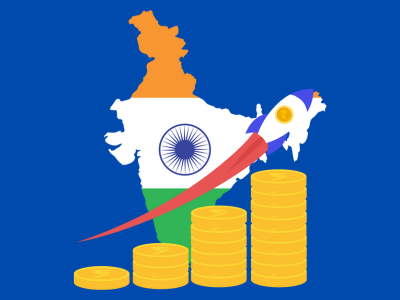Listen to this article
A report by Jefferies – Greed & Fear reveals that the capex cycle of the private sector has increased substantially in the recent past.
The report shows that private capex has gone up from Rs.1457 billion in FY 2015 to Rs.5657 billion in FY 2024, a 300% rise in 10 years. Over five years, it has grown by a CAGR of 20%. Such a growth in private capex happened during FY02-FY08 when the stock market enjoyed massive outperformance in Asia.
These numbers are based on private project funding approved by banks and financial institutions, equity investors and external commercial borrowing.
Citing an example, the report said that a good bottom-up example of a group which has invested heavily in the past two years is the Aditya Birla Group which is active across a number of sectors, including textiles, cement, metals, property and financial services. The group has invested US$20bn over the past two years.
Also, the growth in private capex is evident from the fact that the share of private capex in the gross fixed capital formation as a percentage of nominal GDP has increased from 27.3% in FY21 to 30.8% in FY 24, finds the report.
One sector where capex is expected to rise significantly is the power sector, particularly in renewable projects.
In terms of government capex, the spending has risen from Rs 1.9 trillion in FY14 to Rs9.5 trillion in FY24 and is budgeted to rise to Rs 11.1 trillion this fiscal year.
Overall, the capex cycle will benefit the residential property market.
Let us look at the other key highlights of the report.
· Rally in the residential property market could run for 8-9 years with an annual growth rate of 15-20%
· Expectation of rate cut RBI of 25 bps this year and 100 bps in forthcoming easing cycle
· Government focus will be less on passing new laws and more on deregulation and simplification of regulations
· Equity market will continue to do well for the next 5-10 years
· While valuations remain an issue in the small-cap and mid-cap space, the remarkable resilience of the stock market in the context of the recent hikes in the capital gains tax is proof of the extent to which Indian households now believe in the long-term equity story
· India remains in the early days of building an equity culture - households have invested just 5.8% of the total assets in equities compared to 13.3% in bank deposits
· If the domestic inflows into equities continue to remain strong, the supply of equity will go up as corporates look to raise equity capital
· Currently, the inflows into equities continues to outpace the supply of new equity
· India looks set to enjoy a long runway of healthy real GDP growth running between 6-8% which translates into nominal GDP growth of between 10-12%
· Any meaningful correction, say of more than 10%, is likely to result in increased foreign buying given that the data now suggest that global emerging market investors are underweight India.







